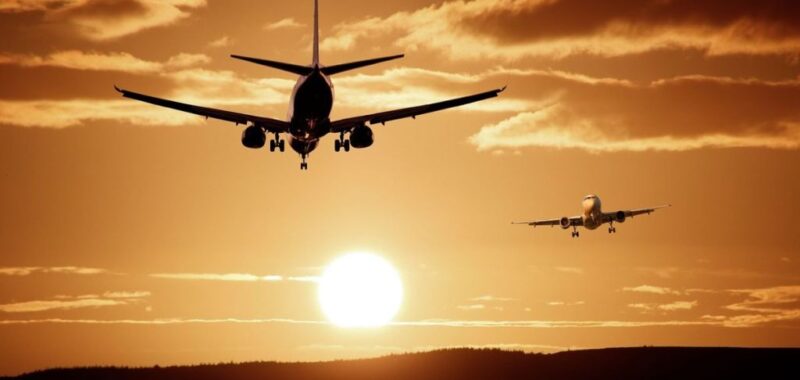India is now the worldâs third-largest aviation market, a milestone that has been highlighted in a new report released Sunday by the International Air Transport Association (IATA).Â
Indiaâs 174 million passengers in 2024 accounted for 4.2% of global air traffic, compared to Chinaâs 16.7% and over 18% for the U.S. While that marks a major leap, more than double Indiaâs passenger volume from just over a decade ago â the gap with the top two markets remains significant.
Still, the runway ahead is long: IATA projects Indiaâs annual passenger traffic to triple by 2044, reaching 425 million journeys per year.
But as the report makes clear, the real story isnât just in the numbers, itâs in how aviation is reshaping the Indian economy, connectivity, and global footprint.
Here are five key takeaways from IATAâs deep dive into Indiaâs rapidly evolving aviation landscape:
1. Aviation Is Now a Cornerstone of the Indian Economy
Aviationâs role in India has expanded well beyond transport. In 2023, the sector contributed $53.6 billion to GDP and supported 7.7 million jobs, according to IATA. That includes direct employment in airlines and airports, plus millions more supported through aviation-driven tourism, trade, and logistics.
2. Domestic Travel Is Soaring
With nearly 80% of the countryâs air traffic coming from domestic routes (136 million passengers in 2024), Indiaâs geography is playing a big role. Flying a distance of 2,500km from Delhi to Bengaluru, for instance, takes about three hours â compared to up to 45 hours by train.
Between 2011 and 2024, domestic air traffic grew 2.4 times, with low-cost carrier IndiGo driving much of that growth. IndiGo operated more than half of all flights in the country.
3. International Travel Is Back
Indiaâs international traffic has rebounded stronger than domestic post-Covid. By late 2024, international traffic was 20% higher than in 2019. The Middle East remains the biggest destination region, led by the UAE, accounting for 7.6 million passengers, nearly 20% of all international departures. The U.S. follows with 3.5 million passengers and over a 9% market share.
The report released at the IATA annual general meeting points out: âA number of new long-haul connections were opened between India and both North America and Africa⦠likely to translate into opportunities to increase economic activity, trade and tourism.â
4. Low-Cost Carriers Dominate
Low-cost carriers now control 71% of scheduled seat capacity, up from 51% in 2014. IndiGo leads with a 53.4% market share, followed by Air India at 12.1% and Air India Express at 8.6%.
International carriers like Emirates, Etihad, and Singapore Airlines also feature among the top 10, though with relatively smaller shares.
As LCCs expand, fares are falling: domestic ticket prices are down 21% since 2011, and international fares have dropped 38%, adjusted for inflation.
5. Indiaâs Fleet Is Growing Fast and Getting Younger
Indiaâs commercial aircraft fleet has more than doubled in the past decade, with 860 aircraft now in service â about 2.4% of the global fleet. Most of this growth is driven by IndiGo.
India also has one of the youngest, most fuel-efficient fleets in the world, with an average aircraft age of just 7.3 years, compared to the global average of 14.8 years. And the growth is far from over: Indian carriers have 739 aircraft on order over the next five years.

